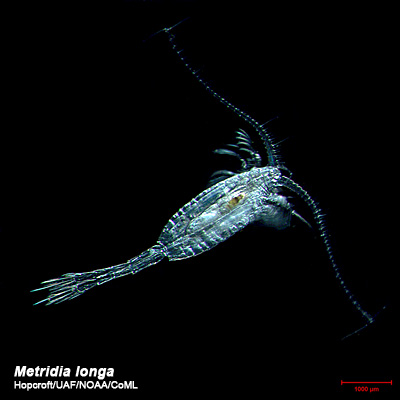This December in a remote part of the Russian Arctic, scientists stumbled upon another type of glowing light, this time in the snow.
In the first documented sighting of its kind, scientists, led by microbiologist Vera Emelianenko observed faint blue lights glowing in the powdery white snow while working in the Arctic off the coast of the White Sea.
After collecting a sample and studying it under a microscope, he concluded the culprits were Metridia longa, a species of copepod.
The copepods were likely caught in a strong current in the White Sea that washed them ashore into the snow.
The glowing phenomenon is caused by a natural process called bioluminescence.
Light is created when luciferin, which copepods carry, mixes with oxygen creating a chemical reaction.
Metridia longa have glands on their heads and body which secrete their incandescence.
Source
In the first documented sighting of its kind, scientists, led by microbiologist Vera Emelianenko observed faint blue lights glowing in the powdery white snow while working in the Arctic off the coast of the White Sea.
After collecting a sample and studying it under a microscope, he concluded the culprits were Metridia longa, a species of copepod.
The copepods were likely caught in a strong current in the White Sea that washed them ashore into the snow.
The glowing phenomenon is caused by a natural process called bioluminescence.
Light is created when luciferin, which copepods carry, mixes with oxygen creating a chemical reaction.
Metridia longa have glands on their heads and body which secrete their incandescence.
Source






















